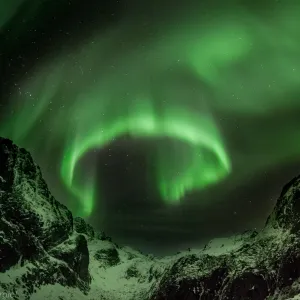Auroras, known as the northern lights (aurora borealis) or southern lights (aurora australis), are breathtaking natural light displays occurring in the Earth’s sky, primarily seen in high-latitude regions around the Arctic and Antarctic. These dynamic light patterns appear as curtains, rays, spirals, or flickers, painting the sky in vibrant colors.
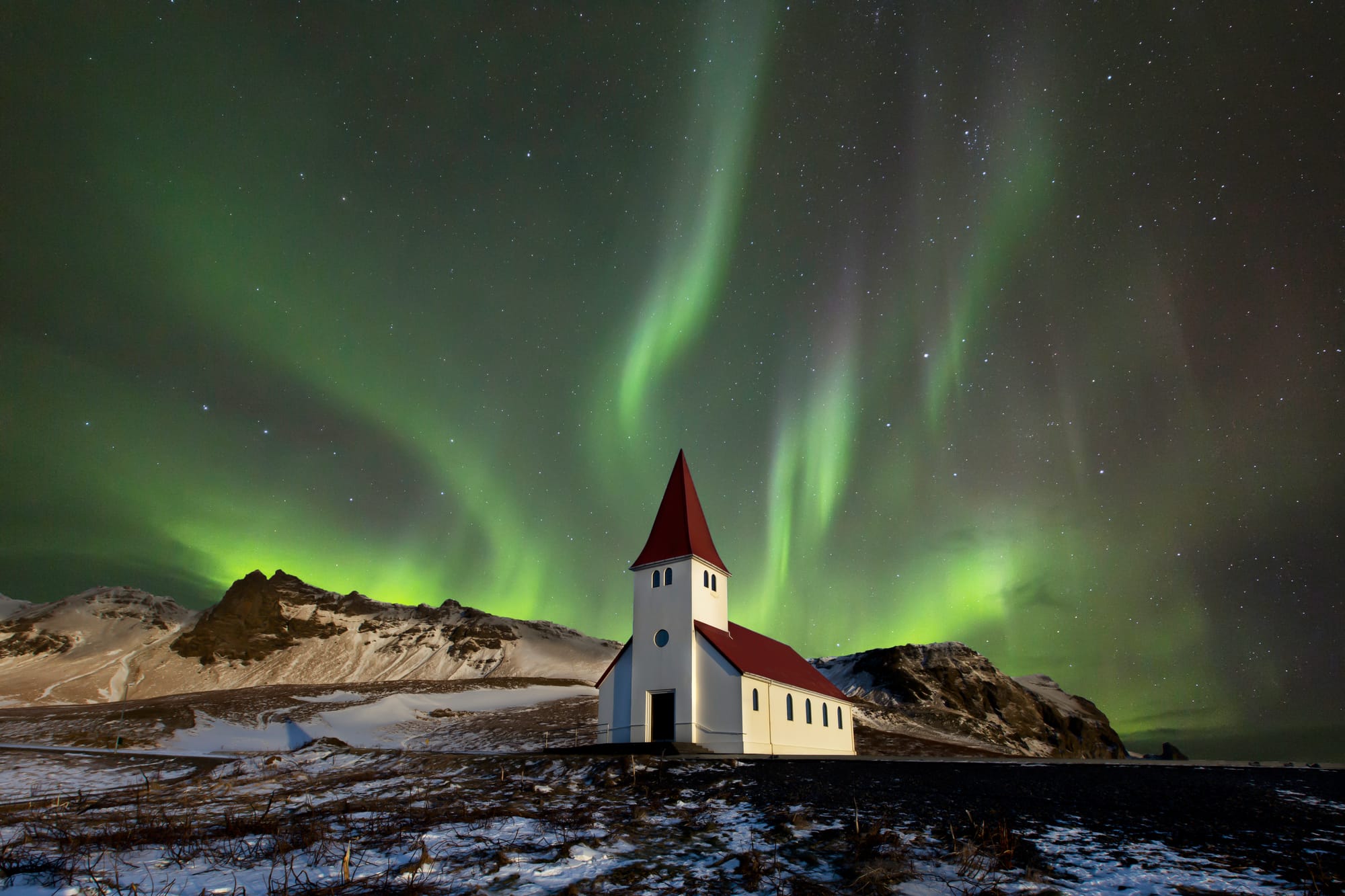
How Auroras Form
Auroras are the result of disturbances in the Earth’s magnetosphere, caused by the solar wind—streams of charged particles emitted by the Sun. Major disturbances often stem from enhancements in the solar wind’s speed due to coronal holes and coronal mass ejections. These disturbances redirect charged particles, mainly electrons and protons, from the magnetosphere into the Earth’s upper atmosphere (thermosphere/exosphere).
- Ionization and Excitation: As these particles collide with atmospheric gases, they ionize and excite these gases, causing them to emit light. The light’s color and complexity depend on the type of gas and the energy level of the particles.
- Auroral Patterns: The forms of auroras, including bands, arcs, and diffuse patches, are influenced by the level of particle acceleration and the location within the Earth’s magnetosphere.
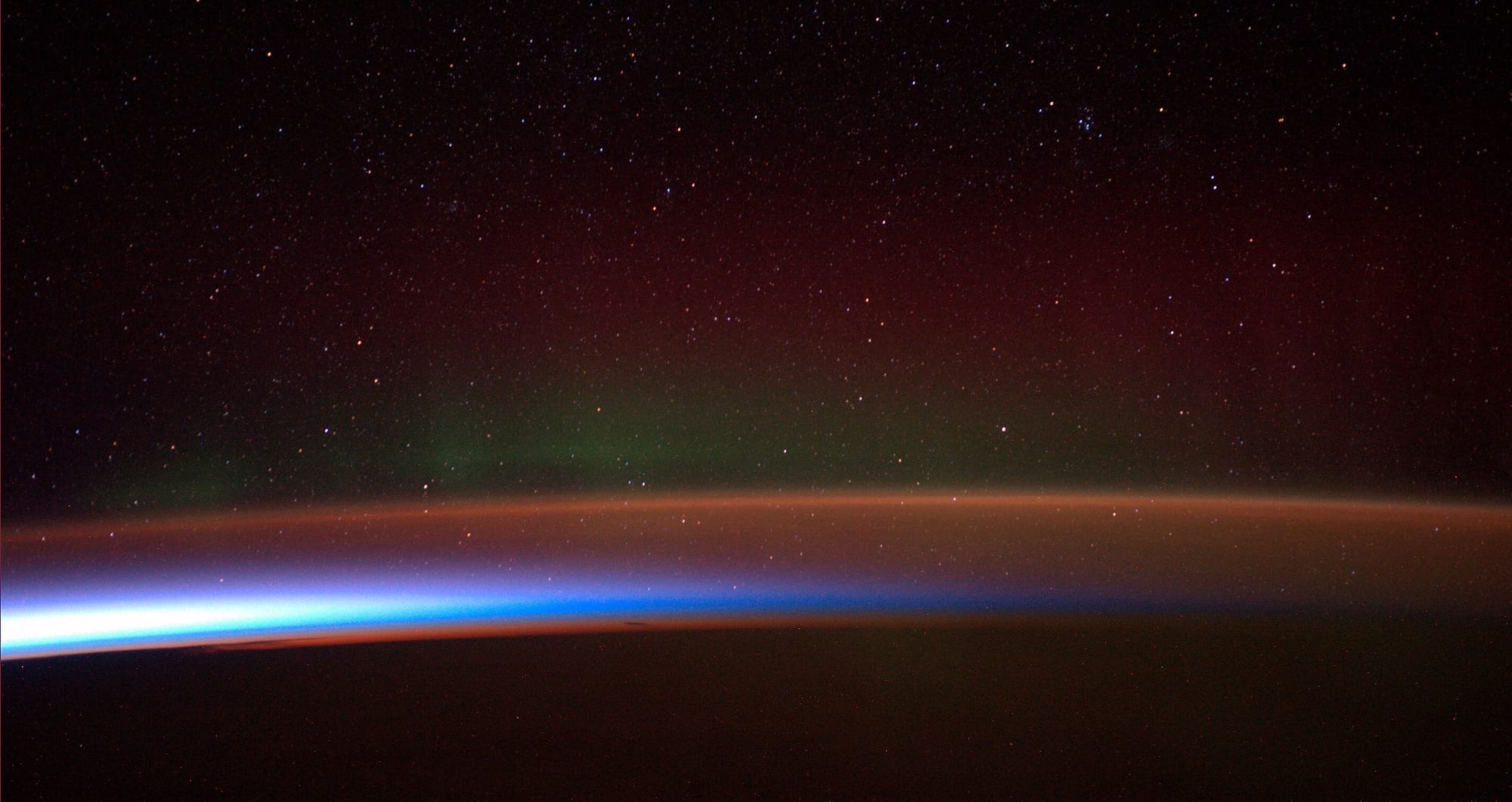
Etymology
The term aurora borealis was coined by Galileo in 1619, from the Roman Aurora, goddess of the dawn and the Greek name for the north wind (Boreas).
The word aurora is derived from the name of the Roman goddess of the dawn, Aurora, who travelled from east to west announcing the coming of the Sun. Ancient Greek poets used the corresponding name Eos metaphorically to refer to dawn, often mentioning its play of colors across the otherwise dark sky (e.g., "rosy-fingered dawn").
The words borealis and australis are derived from the names of the ancient gods of the north wind (Boreas) and the south wind (Auster) in Greco-Roman mythology.
Occurrence
Auroras typically occur in a band known as the “auroral zone,” located 10° to 20° from the geomagnetic poles. This zone is most visible at night against a dark sky and shifts depending on solar wind activity.
- Aurora Borealis: Seen in the northern hemisphere, this phenomenon is visible from regions like Alaska, Canada, Iceland, Greenland, and Scandinavia. On rare occasions, it can be observed as far south as the Mediterranean and southern U.S.
- Aurora Australis: This counterpart in the southern hemisphere is visible from Antarctica, the Southern Cone, South Africa, and Australasia. It mirrors the aurora borealis in appearance and behavior.
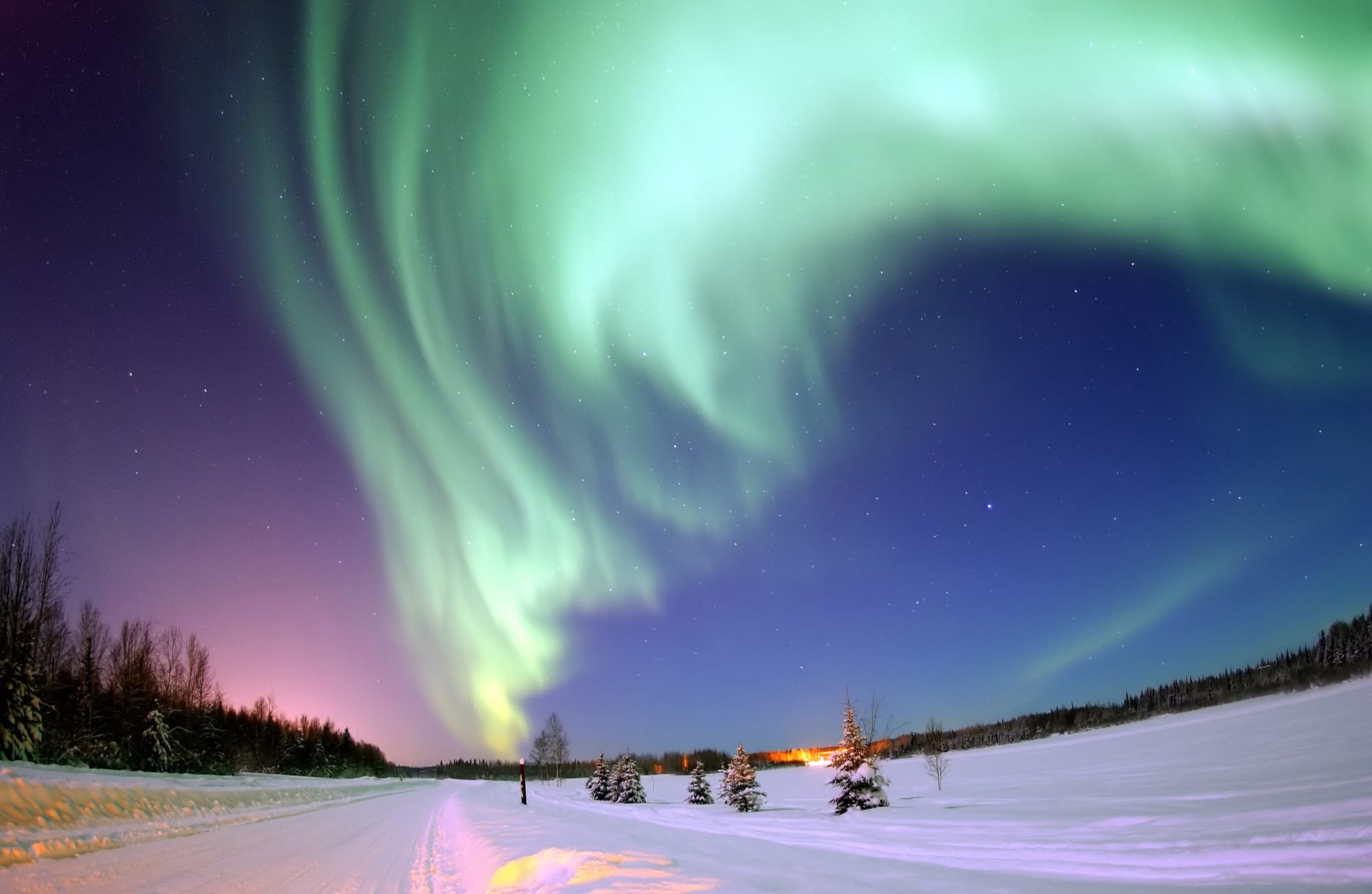
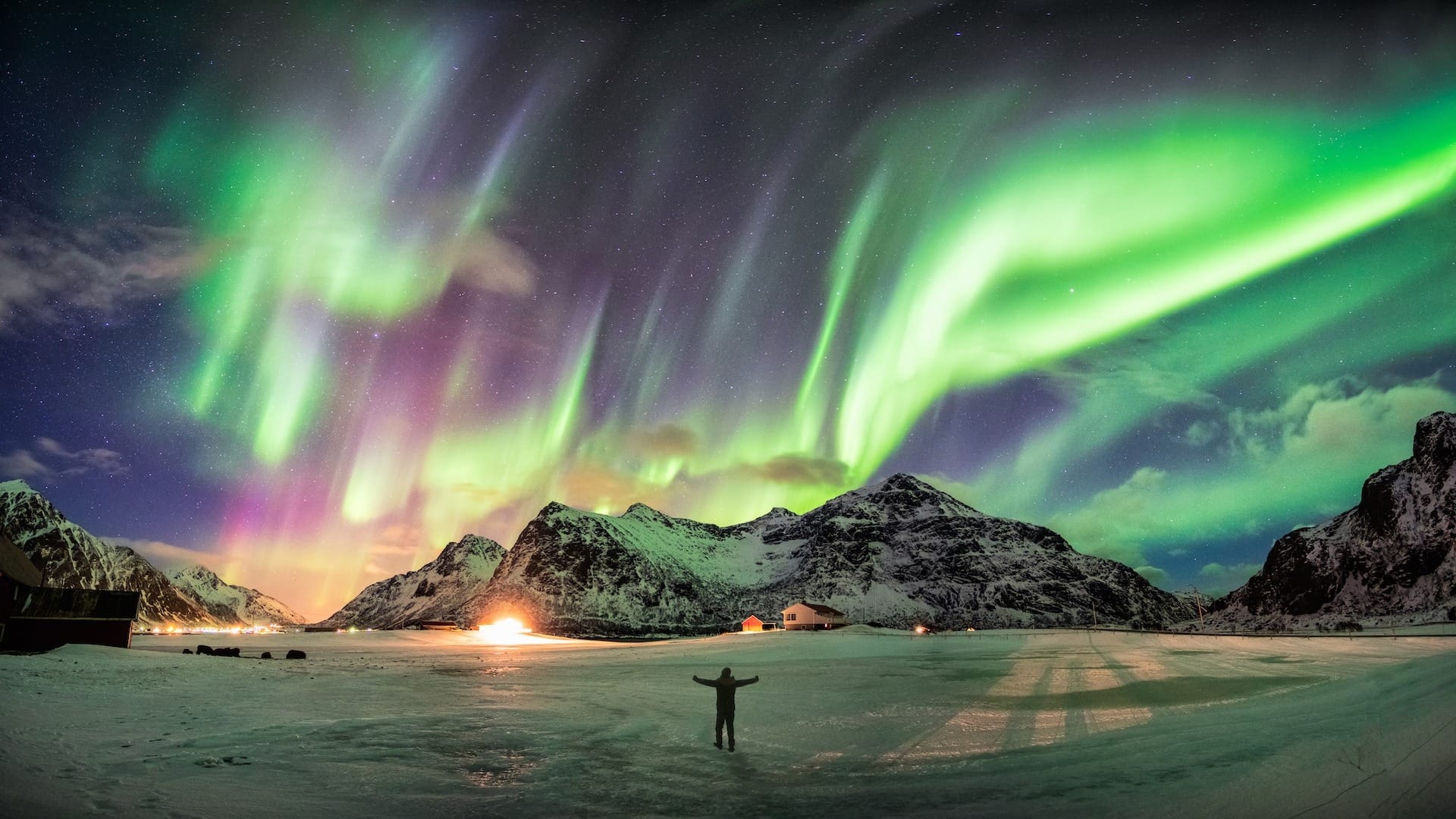
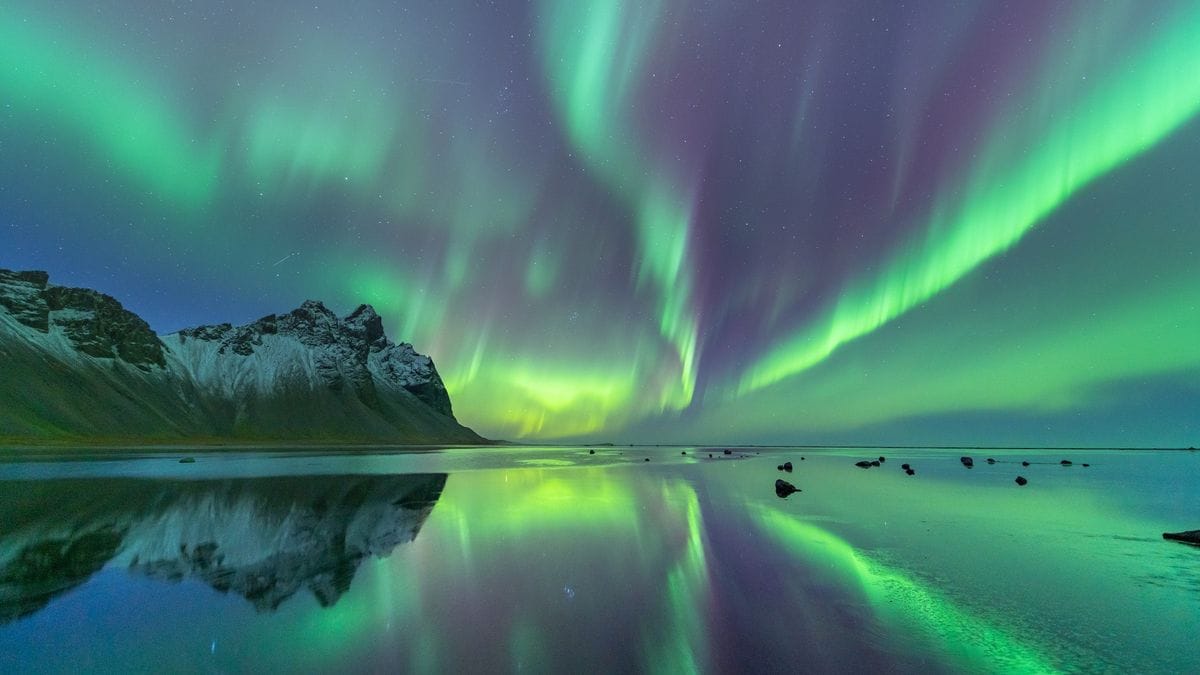
Aurora Borealis seen from across the world
On rare occasions the aurora borealis can be seen as far south as the Mediterranean and the southern states of the US. During the Carrington Event, the greatest geomagnetic storm ever observed, auroras were seen even in the tropics.
A geomagnetic storm causes the auroral ovals (north and south) to expand, bringing the aurora to lower latitudes. The instantaneous distribution of auroras ("auroral oval") is slightly different, being centered about 3–5° nightward of the magnetic pole, so that auroral arcs reach furthest toward the equator when the magnetic pole in question is in between the observer and the Sun. The aurora can be seen best at this time, which is called magnetic midnight.
Auroras seen within the auroral oval may be directly overhead. From farther away, they illuminate the poleward horizon as a greenish glow, or sometimes a faint red, as if the Sun were rising from an unusual direction. Auroras also occur poleward of the auroral zone as either diffuse patches or arcs, which can be sub-visual.


